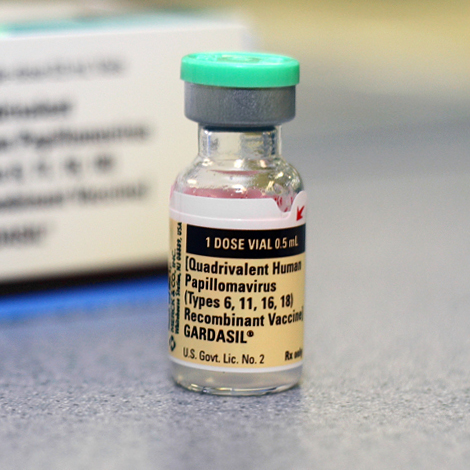As many in the U.S. anticipate October “going pink” for Breast Cancer Awareness Month, I’m honored to feature a guest post by Gayle A. Sulik MA, PhD, Research Associate at the University at Albany (SUNY) and founder of the Breast Cancer Consortium, an international partnership committed to energizing the scientific and public discourse about breast cancer and to promoting collaborative initiatives. She was a 2008 Fellow of the National Endowment for the Humanities and recently won the 2013 Sociologists for Women in Society Feminist Lecturer Award for her book, Pink Ribbon Blues: How Breast Cancer Culture Undermines Women’s Health (Oxford University Press).*
___________________________________________________
I too used to secretly look forward to October, when I would drape myself in pride with all manner of garish pink, survivor-emblemed merchandise and take my place in the Survivors circle whilst bopping out to “We Are Family” or whatever the cheesy designated anthem was for that year, at one of the many breast cancer fundraising walks.
But I’m not doing it this year or ever again. It’s just a load of bollocks and a great excuse for companies to market their products to the well-meaning consumer in the guise of “Breast Cancer Awareness” when all it really boils down to is profiteering at the expense of real people really suffering and really dying from this insidious disease.
— Rachel Cheetham Moro,
The Cancer Culture Chronicles, Sep. 19, 2009
 Rachel Cheetham Moro used to write a lot about the bollocks of breast cancer on her blog, The Cancer Culture Chronicles, which she published from June 2009 until her death, from metastatic breast cancer, in February 2012.
Rachel Cheetham Moro used to write a lot about the bollocks of breast cancer on her blog, The Cancer Culture Chronicles, which she published from June 2009 until her death, from metastatic breast cancer, in February 2012.
Though Rachel’s blog posts covered an array of topics about her experiences with breast cancer and the curiosities of pink ribbon culture, she was particularly savvy in her descriptions of the pink-themed marketplace where strength, hope and courage come in the form of t-shirts, chocolates, figurines, and narratives of idealized survivorship. With snark-filled accuracy, Rachel catalogued how merchandisers blithely use the widespread desire for cure(s) to lull well meaning supporters into a state of consumptive bliss. Shopping for a cure never felt so good. If only “cure” were part of the transaction.
As a woman living with terminal cancer, Rachel knew that a “cure” for breast cancer was a figment of the collective imagination. Not only for her, but for all of those living with metastasis (when cancer spreads to distant organs of the body). Rachel had been diagnosed with breast cancer on three separate occasions. She had the typical array of treatments and brief periods of remission, but the third diagnosis changed everything. There was no cure. There would be no cure. It was simply (and complicatedly) a matter of living with breast cancer until dying from breast cancer.
There are rare cases of people with metastasis who live twenty years, and no one knows which statistics will apply to them in the end. But the truth of the matter, which Rachel knew to her core, was that she would not survive this disease. What’s more, the treatments that were geared toward keeping her cancer at bay ended up damaging nerves, organs, and limbs until she had difficulty managing routine aspects of life. Walking, eating, cooking, typing, breathing. Activities many of us take for granted became everyday obstacles.
None of this stopped Rachel. She kept doing what she could. At the age of 41, she managed to retrofit her house to accommodate a limited range of motion and the inability to use her dominant arm. She cooked one-handed, henpecked her keyboard and, prepared for a day when she might be able to drive again, had hand controls installed in her vehicle. Rachel learned how to live life within the continually narrowing confines of patient-hood.
And it was patient-hood NOT survivorship that framed Rachel’s life. “I’m a cancer patient, Gayle. It’s what I do now. I spend hours in waiting rooms and chemo-chairs, hours on the phone to manage my health care, hours doing things that used to take me minutes. Being a cancer patient has become a job. It’s become my life. I don’t want it to be, but I don’t have a choice.”
During one of my visits with Rachel, I took her to a chemotherapy session. On the way home she directed me to a steep and narrow road that snaked in and around the Highlands of New Jersey. We ended up at a property nestled in the hills overlooking the Atlantic Ocean. Rachel wanted me to see her “dream house.” There it was. She had grown up near the ocean in Perth, Australia. Sand and saltwater were in her blood. Rachel smiled when we drove up to the house. Then she told me the truth. This was a pretend dream house. “The devastation of cancer,” she said, “is that it not only takes your life, it steals your dreams.” Then in a matter-of-fact tone Rachel repeated the statement. “That’s what cancer does, Gayle, it steals your dreams.”
I went silent. A sense of dread was a dead weight around my heart. They were my dreams too. Not the house by the ocean. The dream of having Rachel in my life.
For Rachel and me, our time together had been a full but short 16 months. We didn’t find each other until October 2010 when she emailed me after reading my book, “Pink Ribbon Blues.” We became fast friends and collaborators. Rachel was a rabble-rouser, an activist — a soul sister who got what I was about. She believed as strongly as I did that pink hype was not the answer to the breast cancer problem. It was in fact getting in the way. Profit motives and branding priorities led to a distortion of medical information, the misallocation of funds, and an overall misrepresentation of the disease, especially for those who were dying from it. These truths, which rarely made the headlines, infuriated both of us. We were committed to change. This reality swirled around in my head in that brief moment of silence.
Then I asked Rachel, “What gets you through the day if you no longer have your dreams?” Without pause she said, “You.” “You do, Gayle. And my beloved…and Sarah… my cyber-sisters…Newman [Rachel’s dog]…and screaming about this pink hypocrisy. It’s going to change, Gayle. The walls are going to tumble down. It’s just a matter of time.”
I left New Jersey after a few days and returned to Texas. We continued our work via email, phone, Skype, and other social media. Ten weeks later Rachel was in the hospital. Cancer had made its way to her spine, and her brain. It was the same week Susan G. Komen for the Cure announced its now infamous decision to stop giving grants to Planned Parenthood. The same week I was in Florida for an academic conference. As I learned what was happening to Rachel, the Komen story began to unfold.
Komen’s deceptions, misrepresentations, abuses of the public trust, and failures of corporate governance surrounding the Planned Parenthood scandal opened a proverbial can of worms. New investigations surfaced about Komen’s revenues and budget allocations, branding initiatives, questionable corporate partnerships, legal actions against other smaller nonprofits, distortions of scientific data, and long-standing partisan bias. None of this was surprising to those of us who had been working to reveal Komen’s shenanigans long before the Planned Parenthood debacle stirred the public interest. But it was news to many others. Normally Rachel and I would have been sending rapid-fire messages about each new public reveal, in constant communication with the “cancer rebels” to spur social commentary. Not this time.
There was a startling silence as Rachel went in and out of consciousness, her voice missing from one of the most crucial and catalytic public debates to date about Komen’s role in the breast cancer industry. I sent her messages. Reported updates. Did Rachel know that Komen’s true colors were finally coming to light? That her personal efforts to reveal the truth about breast cancer were having an impact? Her beloved Anthony assured me that she did.
My partner in activism died on February 6th, 2012. I hope that Rachel was right, that it’s only a matter of time until those pink walls come tumbling down. Maybe then, there will be a chance of getting closer to that elusive cure.
___________________________________________________
 *The 2012 edition includes a new Introduction about the Komen for the Cure/Planned Parenthood controversy and a color insert of images of, and reactions to, the pinking of breast cancer. For more information please visit Gayle Sulik’s website at gaylesulik.com and her blog at pinkribbonblues.org.
*The 2012 edition includes a new Introduction about the Komen for the Cure/Planned Parenthood controversy and a color insert of images of, and reactions to, the pinking of breast cancer. For more information please visit Gayle Sulik’s website at gaylesulik.com and her blog at pinkribbonblues.org.
** Rachel Cheetham Moro’s blog, The Cancer Culture Chronicles, has been compiled and edited by her mother Mandy Cheetham and her friend Sarah Horton. The book contains all of Rachel’s blog posts in their entirety, with notes, resources and tributes. Available in October 2012, this is a 5×8 hardback book, 384 pages and available at cost from Blurb.com, price $30.95 (£21.50) plus shipping.







